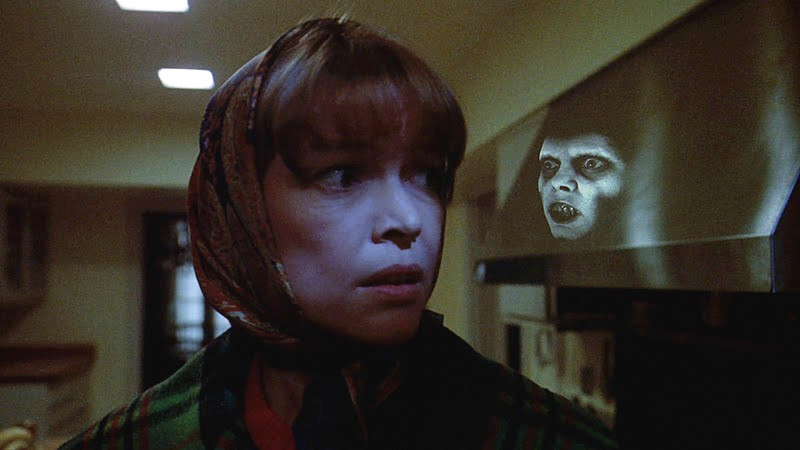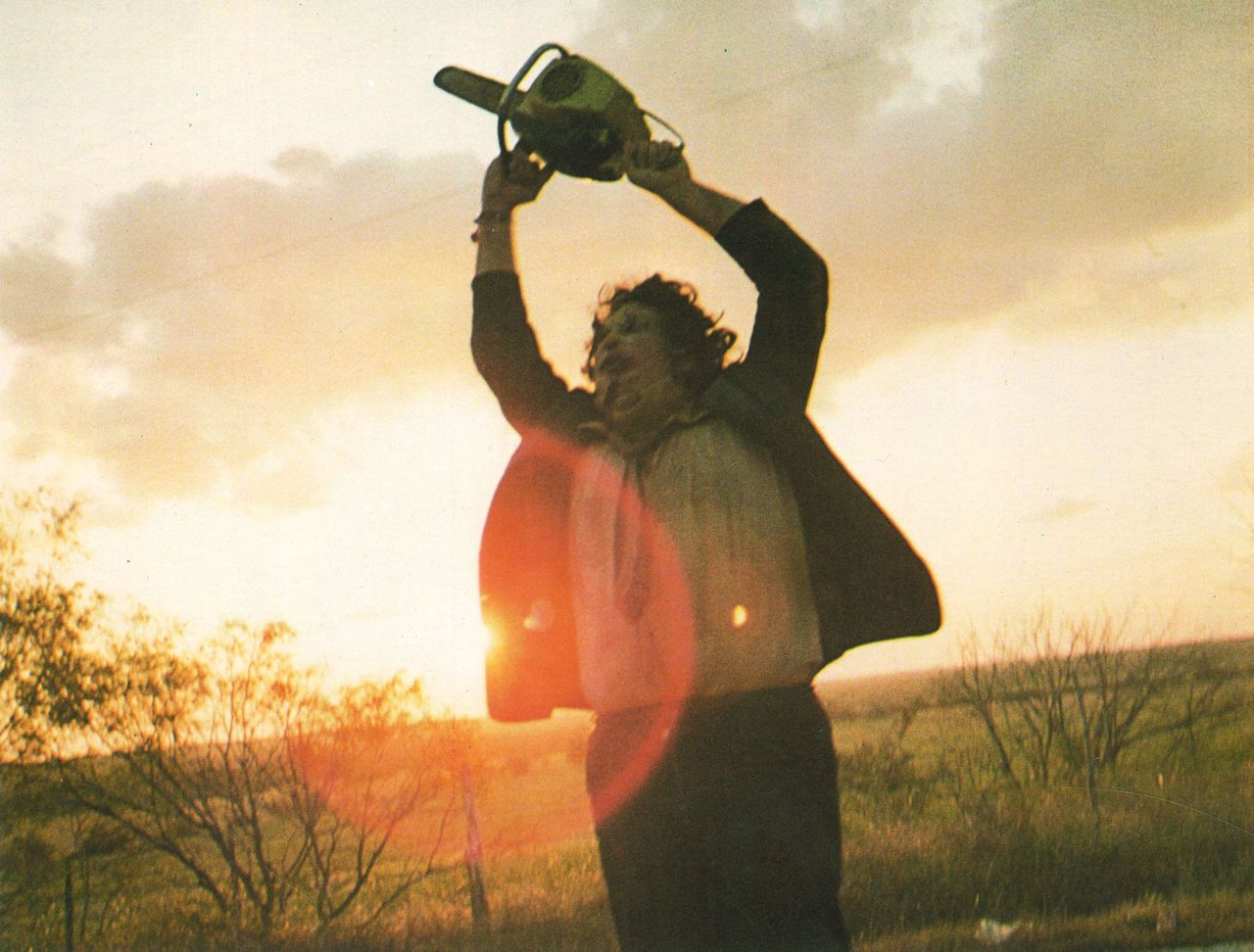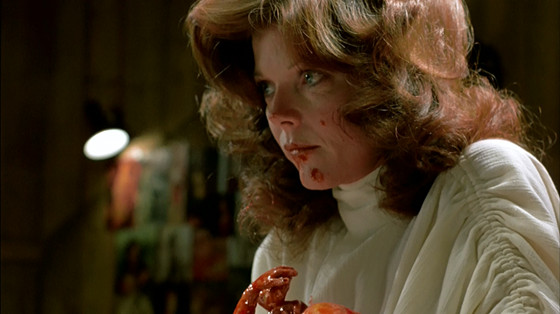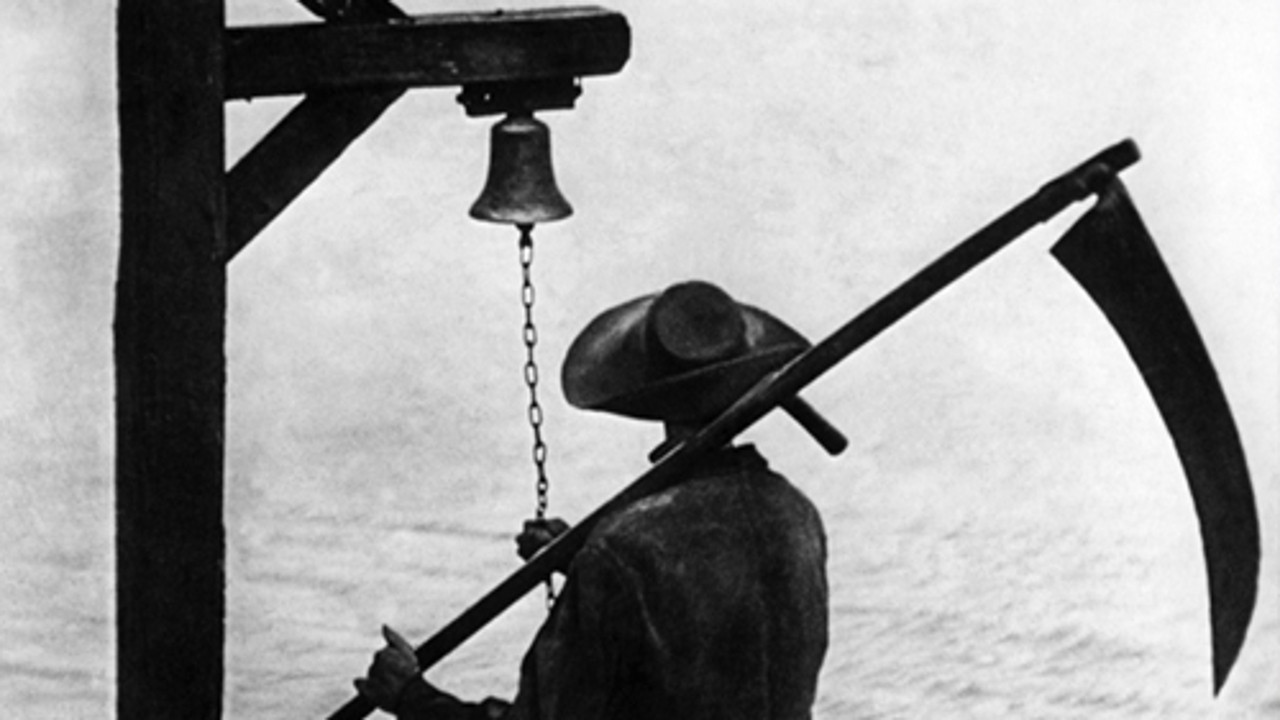
“Poor strangers, they have so much to be afraid of.”
– Shirley Jackson, We Have Always Lived in the Castle (1962)
People love to be scared. Even as they clammily grasp, white knuckled, at the sheets or the arm of whoever’s next to them, terrified at what horror’s are unfolding on the screen, be it menacing clowns, giant spiders, hockey masked murderers or something altogether darker, there is always a grim fascination with things that fray the nerve or loosen the bowel.
If audiences were sent running up the aisles by what is generally considered the first horror film many full moons ago, Georges Méliès’ Devil leaping, bat swirling Le Manoir du Diable (1896), then little did they know what was to come.
What we now would constitute as a good celluloid scare would probably send the sheltered folk in the early 1900’s caterwauling into a permanent catatonic state, and what they found terrifying would barely cause a whimper from even the most apprehensive viewer. But some films stay with you, lingering under the skin and crawling back into focus on the nights where sleep doesn’t descend, their sheer nightmarish visions imprinted on the memory for years.
The following is a list of the 10 scariest horror films ever, it is a list not purely based in gore and guts and loud noises punishing your senses, but one that remembers that silence is sometimes just as terrifying as a chainsaw.
10. The Texas Chainsaw Massacre (1974, Tobe Hooper)

If you were to chip away at the glossy veneer of life and eye suspiciously what lies underneath, then most likely you’d find something similar to The Texas Chainsaw Massacre, a feral, unexposed death trip through the most unnatural, disturbed areas of the human psyche.
Immediately, from looking at the lurid title alone you feel a knot in the stomach. Expectations of limbs being tossed across the screen followed by floods of viscera and gore are, cleverly, reversed, and what we get is close up, eye juddering distortion, with off screen limb removals but enough on screen terror to bring even the most hardened viewers’ hands up in-front of their face.
The simple plot involves a group of friends, including Sally (Marilyn Burns) and whimpering wheelchair bound Franklin (Paul A. Partain), drive into the dark heart of Texas, where graves have been defiled and armadillos curl and crisp up along the road, to find their grandfathers final resting place.
Along the way they pick up an unhinged hitchhiker who takes particular pleasure in sharp implements and their affects on the flesh. Soon he is removed from the road trip, and the group stumble upon a putrefying house, which some of the party foolishly explore.
The following scenes are some of the most upfront minutes of pure horror ever filmed, sheer relentlessness encapsulated in a grimy, crumbling layer of atonal noises, shrieks, clouds of chicken feathers and squealing power tools.
Based upon the gruesome acts of Wisconsin fiend Ed Gein, a man who adorned his home with bones, skulls and human skin lampshades from bodies dug up from the local graveyard. We see similar artefacts in the home of Leatherface and family, a huge chainsaw swinging, seemingly mentally infantile butcher who sees humans as pure meat and meat is his business, and business is seemingly good!
Tobe Hooper makes us nose dive into the horror and he never lets up, from the first shocking murder to the unbearable dinner scene to a punishing final chase, it continues to swell, never dissipating, leaving us unable to take a breath.
The jagged landscapes of abandoned farm houses, sticking out of the earth like ancient Texan tombstones, unsettles the bones and with a score reminiscent of a group of cavemen crudely thumping pots and pans with various household objects, it disorientates. This kind of intensity has never been repeated.
9. The Brood (1976, David Cronenberg)

“Daddy’s downstairs talking to mummy”- Dr. Hal Raglan.
In David Cronenberg’s world, the body is a vessel for horror and repulsion, plagued by insanity inducing vampiric sexual diseases and, in this occasion, the gnarled manifestations of anger amidst the trials and tribulations of a fractured family unit. Even amongst Cronenberg’s vast twisted output this stands out as a startling psychological vision, one with enough brains behind it and enough streaks of pure horror running through it to startle and horrify.
A bulging Oliver Reed plays Dr. Hal Raglan, a psychologist with unusual methods. He uses these unconventional processes to delve deep into a patients mind and unblock their deepest sufferings. Under his care is Nola (an unhinged Samantha Eggar) the wife of Frank Carveth (Art Hindle), and both are locked in a custody battle over their young daughter Candice.
People associated with Candice start to be killed off by deformed, diminutive creatures and Frank sets out to prove the connection between them and Dr Raglan’s sinister Somafree Institute. Cronenberg wisely keeps these creatures appearances fleeting and rapidly paced during the murders; we never get to truly linger on their misshapen forms, which make them all the more disturbing.
The climax is what drives this film into everlasting purest horror as we find that Nola’s anger towards her many rejections has culminated in an appalling abomination, it’s a scene that spits at the screen and shreds the nerves, once seen, never to be forgotten.
Cronenberg details two people going through a divorce with a child in tow (if it sounds similar to Kramer vs. Kramer then Cronenberg has stated this is his reaction to that particular film) in an unyielding, far more shocking manner than anyone but him could ever document. Its scares jump out of the low lying mist of misery that surround the characters, leading up to that unrivalled, monstrous finale.
8. Halloween (1978, John Carpenter)

Surprisingly by 1978 no-one had made a major contribution to the horror genre involving All Hallows Day, the one date of the year where scares seep into the mainstream and kids and adults dress as their favourite bogeyman and terrorize the streets. John Carpenter changed all that.
Halloween night, 1963, a six year old child dons a mask and butchers his sister. Upon capture the boy is taken to a mental institution to seemingly live out the rest of his days. 15 years later he escapes and returns home to Haddonfield to stalk its young inhabitants, on his trail is his doctor Sam Loomis (Donald Pleasance) who is intent on sending his disturbed patient back to the hospital and back under his watchful eye.
A relatively simple plot doesn’t conceal the absolute terror that lurks in this film. Without the aid of gore tricks and great globules of flesh hanging from the screen, Carpenter crafts a tale of panic and ramps up the tension, silently creeping up on the viewer before lurching at us with relentless scenes of the unstoppable Michael Myers stalking lone survivor student Laurie Strode (Jamie Lee Curtis) after picking off her young friends one by one.
Along with the pulsating score by Carpenter (one of the most recognisable pieces of music in the whole horror genre) his expert use of shadows to conceal Myers, and his use of perspective unnerves the viewer. Michael seems to be on the outskirts of the screen throughout, and without ever having to break into a run or even a brisk walk he manages to be everywhere at once.
Watched alone this is a masterpiece of suspense and horror without ever being gruesome. Where would the horror genre be if Michael never came back home that fateful night?
7. Audition (1999, Takashi Miike)

Beginning as soapy romantic fluff and ending with scenes so sensory and horrifying, its images burned onto the memory, is not the usual brief for a movie. But we are talking Takashi Miike here and the hugely controversial Audition is his most nauseating and terrifying effort. The build up is slow and elegantly paced, with soft bouncy jazz leaping out over the characters and their world, harmless enough, but all that it does is lead us to the very edges of the extreme.
Shigeharu (Ryo Ishibashi) is on the hunt for a new wife after becoming widowed. He discusses this with a friend and soon an audition process is set up in which women will come and try out for an imaginary part in an imaginary film that the producer friend is making.
Out of these women Shigeharu may like to pick his new bride to be. Unfortunately he becomes enamoured with Asami (Eihi Shiina), a fragile looking beauty, and soon they are in a relationship. As time goes on, we learn more of Asami and the film takes on a decidedly darker tone, pushing away all trace of that gentle beginning and leaves pure terror in its place.
As the females are presented to Shigeharu one by one in the audition, he is clearly the dominant one, like a predator eyeing up his next meal. But those roles are hideously reversed as the seemingly submissive Asami takes gradual control, tapping into his carnal need, until a final blow out of violence at its climax, as Shigeharu submits to her sputtering brutality. The sheer shock of the violence and horror in Audition is too much for most, but this is a masterpiece of hellish scares for those who want to indulge.
6. Vampyr (1932, Carl Theodor Dreyer)

When Freddy Krueger attacked the dreams of the youngsters in Elm Street, he didn’t come close to the nightmarish scenes that drift through this film. Its images glide past woozily like ghosts and the subconscious wilts under their weight.
Far more terrifying things lay awake deep in the catacombs of the mind than what could ever surround us in everyday life. And Vampyr, although being void of the shock scares that normally litter a horror film, proves this with minimalist intensity, like a permanent state of sleep paralyses watching strange events unfold, but never understanding them or their importance.
Allan Gray arrives at a small town late one night, and where best to spend the night as a studier of all things occult, than a strange inn full of deathly passageways, ominous characters and an atmosphere as thick as London fog.
After an old man gives him a parcel and a cryptic message, Allan sets out to discover what this means. He encounters a sick young girl who has been bitten by a vampire and is in the final throes of life. Allan has to protect the girl and her sister Gisele, before the creatures of the night close in on them forever.
Silence is just as terrifying as a wailing chainsaw in this film. It leaves long spaces where the emptiness and uncertainty of the proceedings conjure confusion and fear. And the series of connected spiralling sequences that torture the mind as we wait for a straight ahead plot turn or a climax, are quiet, incredibly dark in tone and deathly like a faded photograph thick with dust and torn by time.
A tilted, unsettled world is created and it is creepier than the actual vampire (who isn’t the kind of bloodsucker that appears grandly at your bedside at night or jumps from shadows) itself.
This “strange adventure” is one that doesn’t require any sleep to form its nightmares.